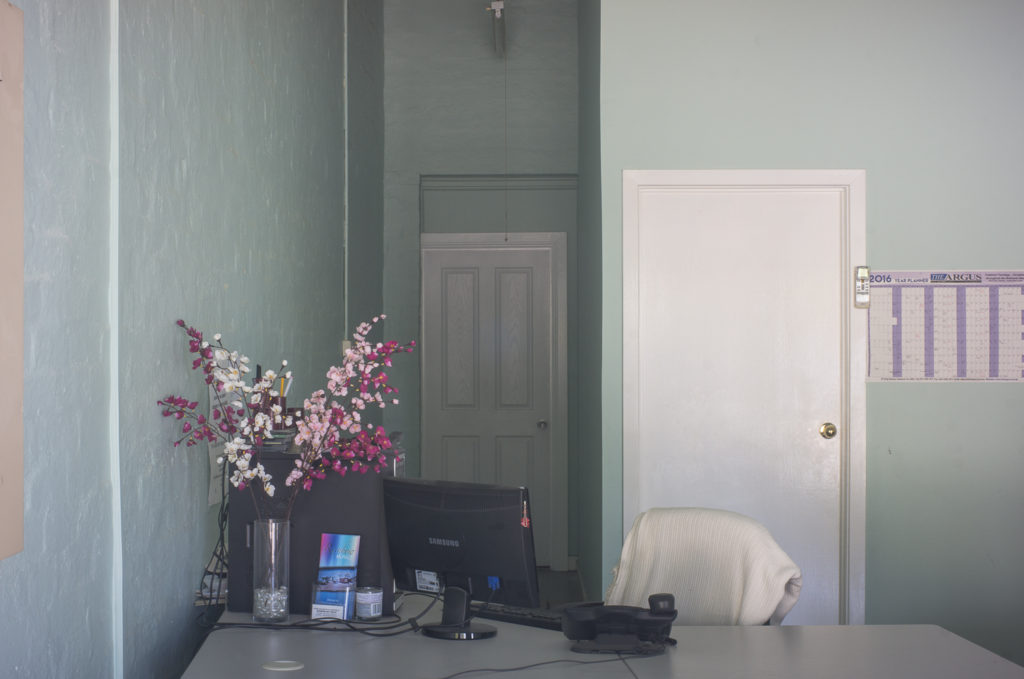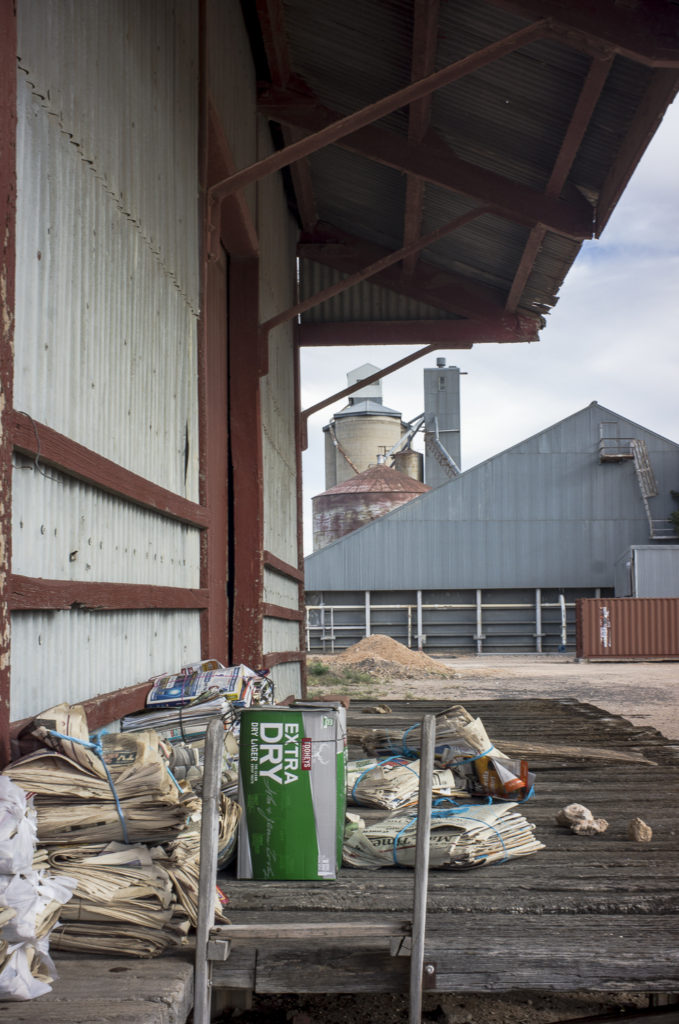Whilst I have been working on images to build up my digital and film galleries I have been searching for some Australian antecedents to my documentary approach to photography for the Mallee Routes project. Who has been here before? What approach to documentary photography did they take? Is there a body of work that exists in the archives? Or do the archives mostly consist of vernacular photography as the history gallery is suggesting? What does the Australian documentary tradition look like? In what ways have the tensions in photography’s ambiguous status as art object and documentary information been dealt with?

One of the antecedents that I found was the work of Geoffrey Collings, a designer, film making and photographer who worked in the documentary tradition established by John Grierson, the leader of the British documentary movement, the American filmmaker Robert Flaherty, and the work of the Farm Security Administration (FSA). Under Roy Stryker, the latter employed photographers such as Walker Evans, Ben Shahn and Dorothea Lange from 1935 to 1943 to document the impact of the Great Depression on rural America, to show the necessity and effectiveness of New Deal agricultural programs, and to to sway public opinion in favor of the Roosevelt administration’s economic recovery programs.
Collings 1947 film on soil erosion, Hold the Land, references the Mallee whilst his photographs that were visual notes for his film work are of the Mallee country. These still photographs were in the documentary tradition, albeit one that was understood in rather black and white terms.

The exhibition catalogue for the Dahl and Geoffrey Collings: Exhibition of Modern Industrial Art and Documentary Photographs, in 1939, states that:
“Documentary photography merely means truthful photography look at this now. A film that is true to life is a documentary film. In this sense the press photograph is true and the ‘art’ photograph false. Every mental image is compounded of observed fact and emotion stimulated by the fact. There is no simple image in the mind. We cannot see a human child without feeling its humanity; that is why a photograph to be true must admit of more than merely photographic values. The images which the human eye receives are not necessarily sharply defined. Sharp definition alone will not make a truthful photograph. We are dealing with life, in which an exhaustive treatise carries less power of conviction than an epigram. A documentary photograph is an epigram in picture form.”
This is part of the tradition of documentary photography, which began in the late nineteenth century and disdained “photographic tricks” and “gimmicks,” aiming “to record real life without artifice”. The documentary approach is not just holding up a mirror to past events since it is also a way to directly connect human experience with personal compassion, and are conscious acts of persuasion.

Another of the Australian antecedents was Max Dupain, who worked with John Grierson’s idea of the documentary as the creative treatment of actuality in opposition to the ‘cosmetic lie of fashion photography or advertising illustration’. Creative in the documentary tradition refers to the arranging subject matter, experimenting with alternate compositions, or using titles or descriptive captions to direct the gaze of prospective viewers and underscore the image’s intended meaning.
We can infer from these antecedents that the Grierson documentary tradition is distinguished by its evidential status, social purpose, creative authorship and educative ambition as distinct from the positivist conception of documentary photography being a window on the world. Secondly, the state libraries libraries in confirming their commitment to photography, did so as a non aesthetic-object based, content-driven, curatorial strategy. Their collecting focused on the photograph as a document of Australian life. In 1971 the National Library of Australia clarified its collection policy: it would only collect photographs as examples of photographic art and technique from the period up to 1960, leaving post-1960s art photography—-eg., the subjectivist boom of the 1970s that was driven by the graduates from the new art schools — to the new state and federal gallery photography departments.
If the art photography tradition has been integrated into the newly contemporary art museum within the connoisseurial canon of modernist art practice, then by its own logic it excludes photography as reproduction. This tradition is based on a series of exclusions and one of the constant exclusion of the vernacular and of reproducibility itself. In Australia in relation to the location of photography between the library and the art museum, in terms of a split between information and aesthetics, a documentary database versus an aesthetic object.

